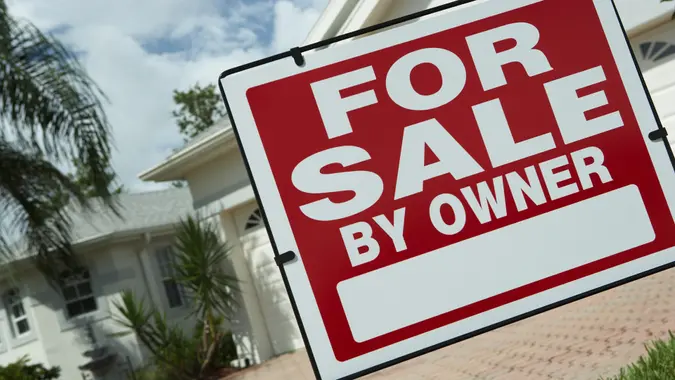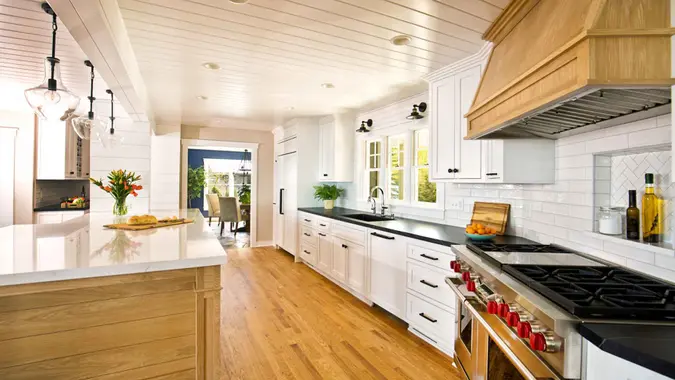Lumber Prices Crash 30% as Mortgage Rates Start Going Up

Commitment to Our Readers
GOBankingRates' editorial team is committed to bringing you unbiased reviews and information. We use data-driven methodologies to evaluate financial products and services - our reviews and ratings are not influenced by advertisers. You can read more about our editorial guidelines and our products and services review methodology.

20 Years
Helping You Live Richer

Reviewed
by Experts

Trusted by
Millions of Readers
The prospect of a cooling housing market tied to higher mortgage rates and ongoing supply-chain issues has sent the price of lumber tumbling from the lofty heights it hit last month.
Lumber prices have fallen 30% over the past two weeks, Business Insider reported, hitting a low of $934 per thousand board feet on Tuesday. That was down from $1,338 as recently as Jan. 14. The recent slump is the lumber industry’s longest since July, Bloomberg reported.
Part of the decline has been attributed to rising mortgage rates, which some industry experts say will lead to a slowdown in home sales. The average 30-year fixed mortgage rate increased 50 basis points to 3.55% between late December 2021 and late January, according to Freddie Mac. And as GOBankingRates recently reported, the Mortgage Bankers Association projects that the rate will climb to 4% by the end of 2022.
The effects have already been felt on home sales. U.S. pending home sales in December declined 3.8% from the previous month and 6.9% from a year earlier, the National Association of Realtors reported last week.
“The market will likely endure a minor reduction in sales as mortgage rates continue to edge higher,” NAR Chief Economist Lawrence Yun said in a news release.
That slowdown might not last too long, however. Demand for homes remains high in the United States, and the supply of available homes remains low. Freddie Mac estimates that the market is still 3.8 million homes short of meeting current buyer demand.
Meanwhile, the drop in lumber prices continues a pattern of volatility that began during the early days of the COVID-19 pandemic. Prices reached all-time highs during the pandemic’s building boom, Bloomberg reported, but then crashed hard when sawmills accelerated production and high prices led to a drop in sales.
Complicating matters for the lumber industry are supply chain problems that keep getting worse. Flooding in British Columbia, a major lumber producer, disrupted supplies and shipments in late 2021, Bloomberg noted.
More From GOBankingRates
 Written by
Written by  Edited by
Edited by 

























